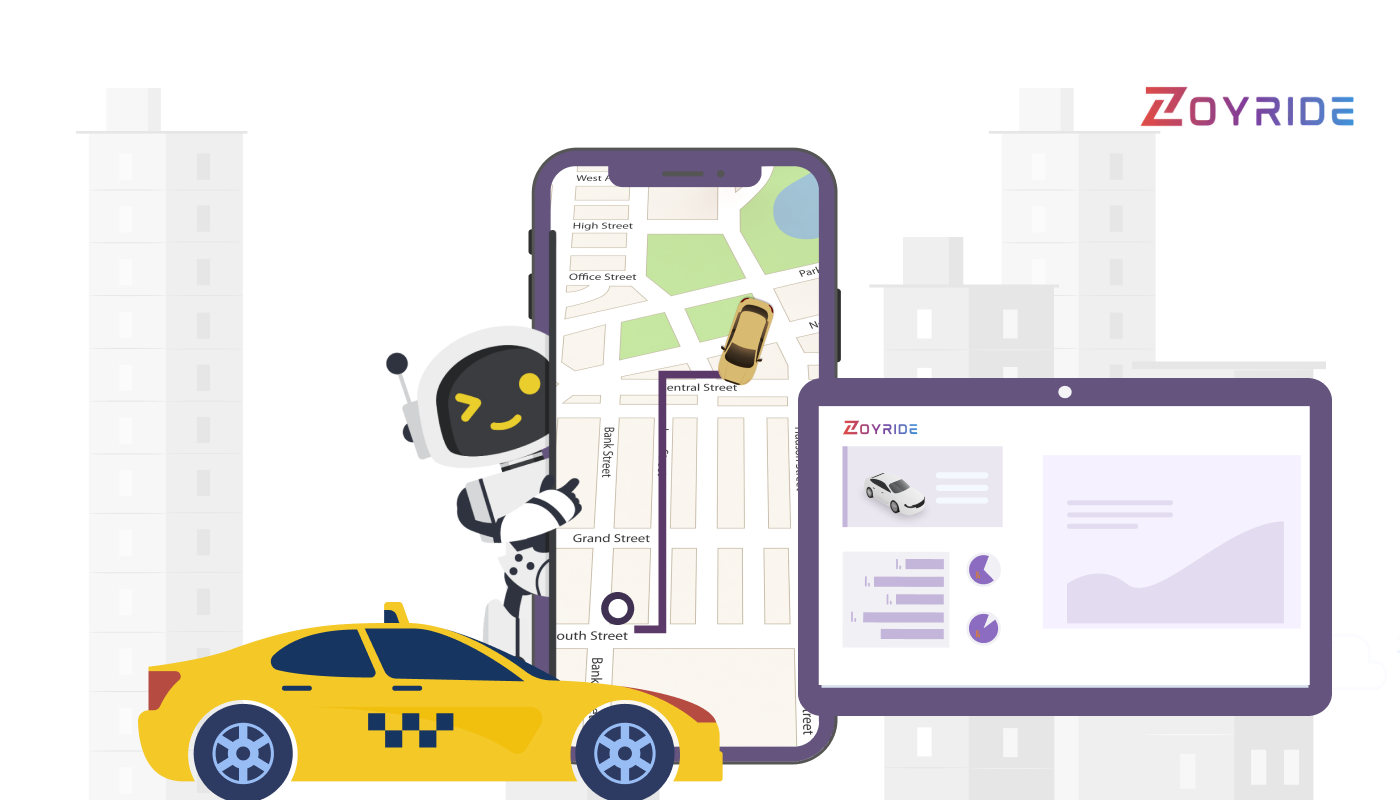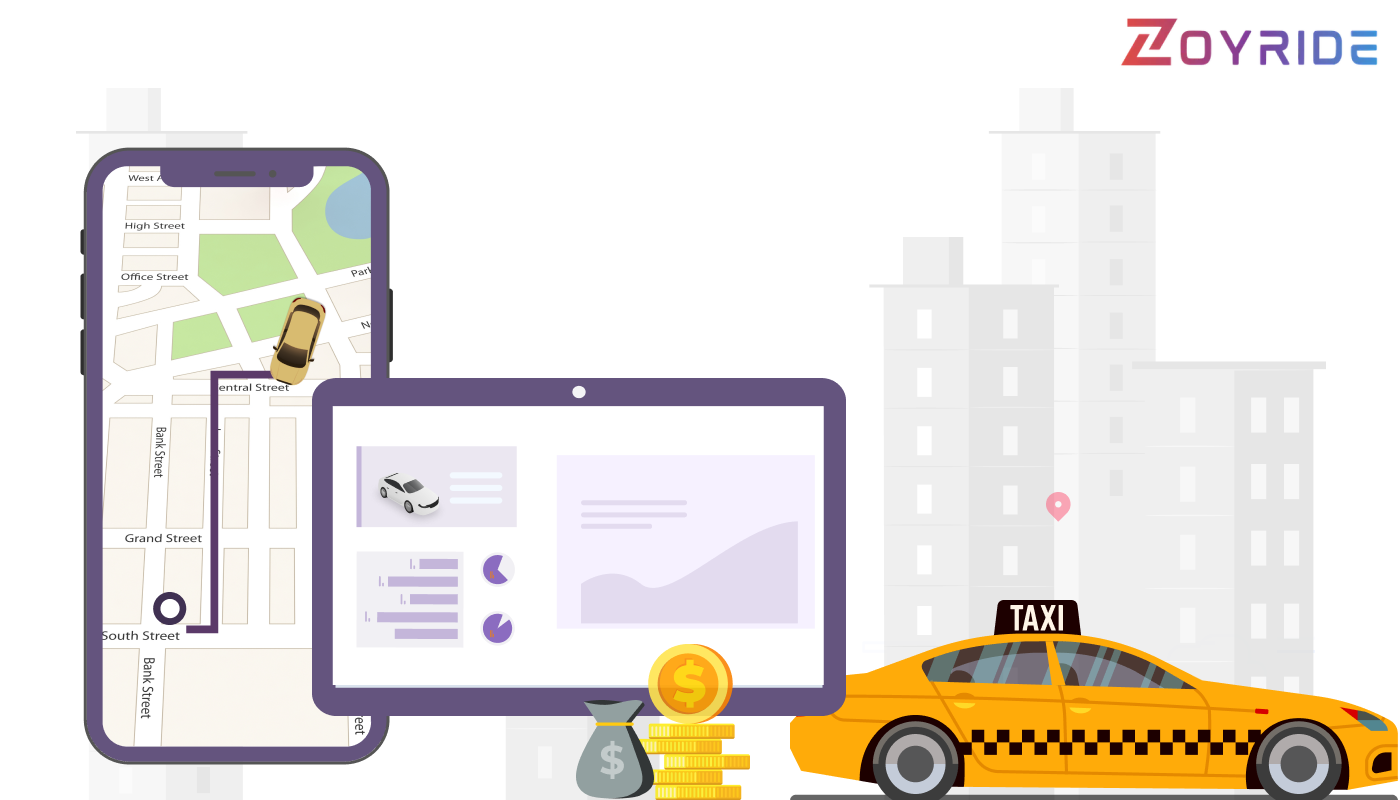
In today’s rapidly evolving transport landscape, managing a taxi business goes far beyond simply matching riders with drivers. With rising customer expectations, complex routing challenges, and the need for operational efficiency, smart fleet operators are turning to AI-based taxi software to gain an edge.
So, what’s all the buzz about AI? Let’s break it down in plain terms — and explore how it’s quietly transforming everyday operations for taxi businesses of all sizes.
What is AI-Based Taxi Software, Really?
At its core,AI-based taxi software is a digital system that uses artificial intelligence to make smarter decisions for your transport operations. Unlike traditional dispatch software that follows fixed rules, AI systems learn from trip history, rider preferences, traffic data, and demand patterns.
Think of it as having a virtual operations manager that never sleeps — constantly learning, adjusting, and optimizing how your fleet runs.
Smarter Dispatching with Less Manual Work
One of the biggest wins with AI is automated dispatching. Rather than assigning drivers manually or relying on static rules, AI:
- Detects the closest available driver
- Considers real-time traffic and congestion
- Accounts for peak demand and zone restrictions
The result: Faster pickups, balanced workloads, and fewer idle miles. Your team focuses less on micro-managing, and more on scaling.
Predictive Demand: Stay Ahead of the Curve
Why react when you can plan? AI can analyze historical data and real-time activity to predict future demand. For example:
- More trips near event venues during weekends
- Rush-hour demand surges in business zones
- Airport pickups increasing on Mondays
With this insight, you can proactively position drivers where they’re needed most — improving service and reducing wait times.
Driver Management Without Micromanaging
Managing drivers becomes easier when you can rely on data instead of assumptions. AI monitors:
- Driving behavior (speed, idling, trip efficiency)
- Cancellation rates
- Daily trip counts and route performance
This helps you identify coaching needs, reward top performers, and resolve complaints based on facts. No need for constant back-and-forth or manual log reviews.
Personalized Rider Experience
Passengers today want more than just a ride — they expect convenience and care. AI helps you deliver by:
- Predicting rider preferences (like pickup points or driver gender)
- Sending smart ETAs based on traffic data
- Automating ride receipts and feedback collection
These subtle touches make rides smoother and encourage customer loyalty.
Real-Time Business Insights
AI-powered platforms give you visibility into your operations with zero delay. With one dashboard, you can:
- Track total bookings per day or per zone
- Identify low-performing routes
- Spot service gaps and plan shift timing
Instead of guessing, you can use hard data to make smarter decisions — from marketing strategies to maintenance planning.
Cut Down Costs Without Cutting Corners
Every mile, every trip, every hour counts — and AI helps you make the most of them. Here’s how:
- Recommends fuel-efficient routes
- Flags underused vehicles or idle drivers
- Predicts maintenance needs before breakdowns
This doesn’t just reduce waste — it protects your margins while maintaining service quality.
Built-In Customer Relationship Management (CRM)
AI also improves how you interact with your passengers. Many platforms now include:
- Automated feedback and survey triggers
- Promo codes based on ride history
- Notifications about delays or ride assignments
It’s like having a smart assistant that keeps passengers informed and engaged — without adding pressure on your staff.
What Should You Look For in an AI Taxi Platform?
Not all platforms are built the same. If you’re exploring AI-based systems, make sure they offer:
- Smart dispatching and live tracking
- Rider and driver mobile apps (customizable)
- Digital billing, invoicing, and secure payment integrations
- Modular CRM and performance reports
Zoyride, for example, offers all these in a clean, cloud-based dashboard that’s scalable for startups and enterprise fleets alike. You don’t have to adopt every feature at once — you grow at your pace.
Final Thoughts: Where AI Can Take Your Business
Adopting AI isn’t about replacing humans — it’s about amplifying what your team can do. For taxi operators, AI is the silent co-pilot: helping with better planning, faster dispatching, and deeper customer understanding.
If you’ve been running operations on spreadsheets and gut instinct, now might be the time to rethink how you scale. Platforms like Zoyride bring intelligence to the everyday — and help you compete in a fast-changing market without burning out your team.
FAQs
Q1. Is AI-based taxi software only for big fleets?
Not at all. Whether you run 10 vehicles or 500, AI can help you save time and scale smarter.
Q2. How long does it take to set up?
Most modern systems are cloud-based and don’t require heavy IT. Setup can be done within a few days, with basic training.
Q3. Will I lose control of dispatching if it's automated?
No — you’ll have full visibility and can override decisions anytime. AI just helps speed things up and reduce mistakes.
Q4. Is rider and driver data secure?
Platforms like Zoyride follow strict security protocols including encryption, GDPR compliance, and role-based access controls.
Q5. Can I test it before committing?
Yes, Zoyride offers demos and trial periods so you can explore features without risk.
